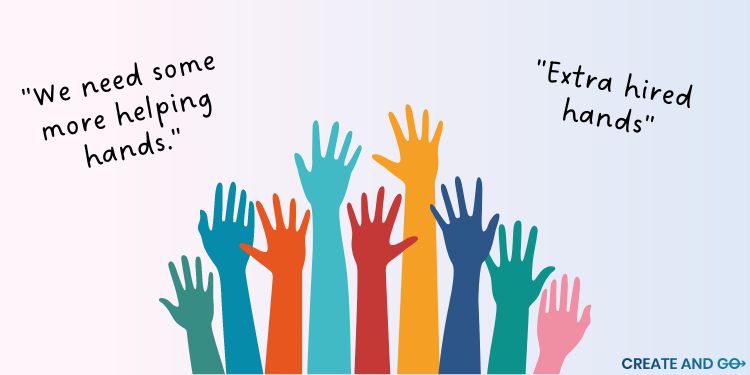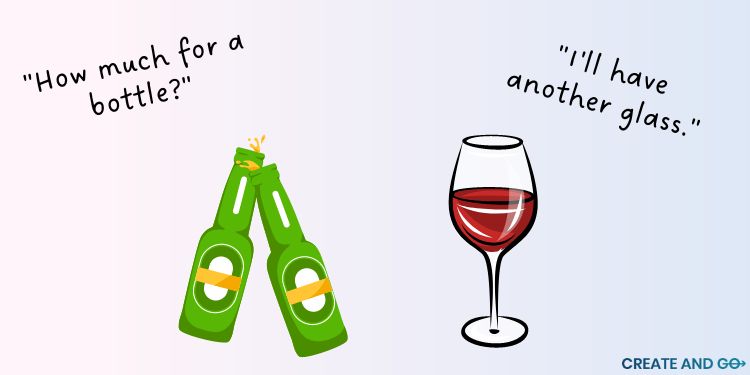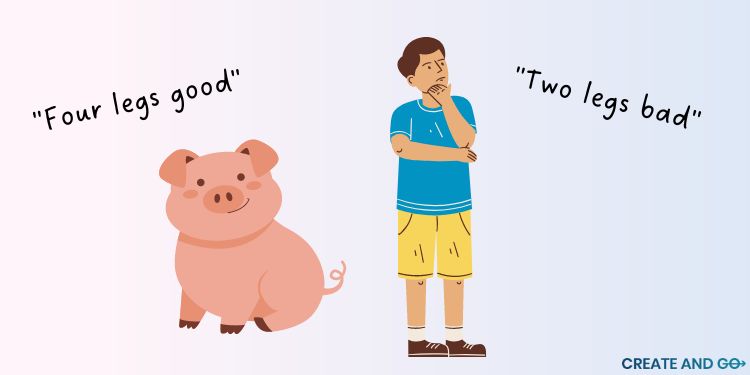Synecdoche is a popular literary device that can add humor, emphasis, and impact to your writing.
You can use it to create vivid imagery, convey complex ideas, or just to make your writing or speech more concise or relatable.
While synecdoche examples can be found in the English language very commonly, most people aren’t aware that they are using this popular literary device.
To help you better understand it, we will share the synecdoche definition along with some common examples of synecdoche to help you learn how and when to use it.
We’ll share some famous examples of synecdoche in literature, everyday speech, and a variety of contexts. We’ll also provide some hints and tips for using synecdoche.
What is Synecdoche?

Synecdoche (pronounced sin-ek-duh-kee) is a literary device in which a part of something represents the whole, or vice versa.
To better understand it, let’s break it into two different parts:
- Microcosm Synecdoche: This type of synecdoche occurs when a small part of something is used to represent the greater whole. For instance, if someone says “the head of a company” to refer to the entire leadership team.
- Macrocosm Synecdoche: Macrocosm synecdoche works in reverse and uses a larger item (or group) to represent a smaller part. An example of this would be saying “the government cut taxes” when really it was only certain officials within the government who made such decisions.
Synecdoche is an interesting form of figurative language because it can be used to make your writing more vivid and interesting while also making the subject matter easier to understand.
It can help you quickly and succinctly explain an idea without needing to use multiple words.
Difference Between Synecdoche and Metonymy

Synecdoche and metonymy are two closely related literary devices, but there is an important distinction between them.
Metonymy is a figure of speech in which something that is related to the subject is used instead of the actual subject itself, e.g., “ride” to represent a car.
Synecdoche, on the other hand, uses part of something to represent the whole or vice versa, e.g. “wheels” to represent a car.
In other words, synecdoche refers to a part of something representing the whole while metonymy refers to one thing standing for another.
In this case, “ride” is a word that entirely replaces the word car, whereas “wheels” are part of a car that is used to represent the whole.
You can see why these two terms are confused quite often and where the lines could get blurry. You could argue that a “ride” is also part of a car or part of the car’s function, which would then put it closer to being classified as synecdoche rather than metonymy.
Types of Synecdoche Examples
Examples of synecdoche in everyday speech and literature come in a variety of forms. Let’s explore some different types of synecdoche examples to help you better understand how they can be used and how to identify them.
Using a Part to Represent a Whole
Using a part of something to represent the whole is a form of microcosmic synecdoche and is also the most common form of synecdoche.

- “Hands” to refer to all manual labor workers. “We need some more hands.”
- “Wheels” to refer to a car. “He has a nice set of wheels!”
- “Suits” to refer to business people. “This room is full of suits.”
- “Threads” to refer to clothes. “She’s wearing some nice threads.”
- “Head” to refer to a person in charge. “Check it over with your department head.”
- “Teeth” to refer to someone’s personality or confidence. “Show some teeth!”
- “Feet” to refer to a person’s movement. “Move your feet.”
- “Boots” to refer to a soldier. “We need more boots on the ground.”
- “Brains” to refer to intelligence. “He’s got more brains than anyone else.”
- “Eyes” to refer to a person looking at something. “I need a second pair of eyes on this.”
Using a Whole to Represent a Part
The reverse is also true with macrocosmic synecdoche examples that use a larger item to represent a smaller part. You see this most commonly when referring to people.
- “The White House” as a reference for the President, staff, or advisors. “The White House is holding a press conference.”
- “Hollywood” to refer to the actors or filmmakers in it. “Hollywood doesn’t make good films anymore.”
- “Wall Street” to refer to the financial sector or bankers. “The market crashed on Wall Street.”
- “The Bench” as a reference to the players or coaches. “The bench needs some new players.”
- “The team” to refer to just the players on a sports team. “The team is off to a great start this season.”
- “Society” to refer to a particular segment of people within it. “Society is changing in many ways.”
- “The police” when referring to individual officers. “The police are doing their best to keep the streets safe.”
- “The media” when referring to individual reporters and journalists. “The media is reporting on the latest news.”
- “Congress” to refer to the members of Congress or a government body. “Congress is voting on the bill tomorrow.”
- “Washington” to refer to the politicians in Washington or the government in general. “Washington is out of touch with reality.”
Using Containers to Represent Contents
Another way that synecdoche can be used is by referring to the container rather than the contents.

- “Bottle” to refer to the beer inside. For example, “How much for a bottle?”
- “Box” to refer to what’s inside of it. “She ate an entire box.”
- “Sack” for potatoes or other items that are stored in a bag. “I need to buy a sack of potatoes.”
- “Crate” for the items inside the box, such as apples or oranges. “That costs $9.95 per crate.”
- “Glass” for wine or whatever is inside of it. “I’ll have another glass.”
Using Materials to Represent Objects Made from Them
Examples of synecdoche are also commonly found when referring to materials and the objects made from them.
For example:
- “Paper” or “plastic” referring to grocery bags. “Do you want paper or plastic?”
- “Paper” to refer to the newspaper. “I read it in the paper.”
- “Glass” to refer to a mirror. “…through the looking glass…”
- “Silverware” to refer to all types of cutlery, even though most are not made of silver. “Put the silverware on the table.”
- “Irons” to refer to golf clubs. “I have a new set of irons.”
Using a Specific Brand to Represent a Whole
You might also see synecdoche used to refer to a specific brand that is so popular it has come to represent the entire category. This type of synecdoche can be seen in everyday language:

- “Kleenex” for all facial tissues
- “Band-Aid” for all adhesive bandages
- “Coke” for any type of soda
- “Xerox” for any copier machine
- “Styrofoam” to refer to any type of polystyrene material, even though Styrofoam is actually a brand.
Using a Category to Represent Items Within That Category
One final way to use synecdoche is by using a category to represent the items within that category.
- “Jewelry” for rings. “I’m looking for my jewelry.”
- “San Francisco” or “New Orleans” or other city names used to represent sports teams. “New Orleans won 4-0.”
- “The sword” referring to death. “They were all put to the sword.”
- “Hardware” to refer to a specific type of hardware like a motherboard. “The computer needs new hardware.”
- “Software” to refer to a specific type of software like word processing or Excel. “I need to buy new software.”
Examples of Synecdoche in Literature
Synecdoche has been around for centuries and can be found throughout literature. The following examples of synecdoche are in a variety of the forms we have already discussed.

- In Romeo and Juliet by William Shakespeare, Mercutio says “A plague o’ both your houses!” He is referring to the families rather than their actual dwellings.
- In F. Scott Fitzgerald’s The Great Gatsby, Daisy refers to her daughter as “the best of me” rather than using the word daughter or infant.
- In George Orwell’s Animal Farm, Napoleon uses the phrase “Four legs good, two legs bad” to refer to animals and humans respectively.
- In the Bible, John 6:53, “Flesh and blood cannot inherit the kingdom of God.” uses “flesh and blood” to refer to people.
- In Salvador Dali’s autobiography, he states “Give me a museum and I’ll fill it.” He uses museum to represent the specific walls that he would use to fill with art.
- In Macbeth by William Shakespeare, “Eyes, look your last!” is an example of using eyes to represent an entire person.
- In Lewis Carroll’s Alice in Wonderland, he uses “off with their heads” as a way to refer to execution.
- In Herman Melville’s Moby Dick, “I’ll chase him round Good Hope and round the Horn, and round the Norway Maelstrom.” is an example of using part (Norway Maelstrom) to represent the whole (world).
- In Jonathan Swift’s Gulliver’s Travels, he states “Blanket me!” which is an example of using a material (blanket) to represent an object (bed).
- In The Three Musketeers, Alexandre Dumas writes ‘“He shall think differently,” the musketeer threatened, “When he feels the point of my steel.”’ Steel is used to refer to a sword.
Synecdoche Examples in Everyday Language
Synecdoche is also seen in everyday language, often without us realizing it. Here are a few examples:
- “Gimme some skin” meaning a handshake or a high-five.
- “The car is running” meaning the car engine specifically.
- “We’re going to the woods” meaning a specific forest or area of land with trees.
- “Shoulder” to mean burden or responsibility. “I can’t take this on my shoulder anymore.”
- “Fender” when referring to the entire car body, not just its fenders. “It was a fender-bender.”
- “Handle” when referring to a situation. “Do you have a handle on things?”
- “Steel” when talking about weapons like guns or knives. “Make sure you have steel on you just in case.”
- “Greens” when talking about vegetables. “I’m making some greens for dinner.”
- “Brass” when referring to higher-ups in the military. “The brass is coming to inspect the troops.”
- “Firm” or “office” referring to the specific people inside the office. “The firm decided to go in another direction.”
How to Use Synecdoche Effectively
Using synecdoche can help to give your writing an extra layer of depth and complexity. However, it’s important to use it sparingly and effectively so that you don’t overdo it.
Here are some tips for using synecdoche in your own work:
- Make sure the part you’re referring to is relevant to the whole thing – this will make your writing more cohesive and easier to understand.
- Avoid cliches – try to be original with your choice of words as much as possible.
- Be aware of any potential double meanings or misunderstandings that could arise from your usage of synecdoche.
- Focus on the message you’re trying to convey and how synecdoche can help strengthen it.
FAQs About Synecdoche Examples
Other Types of Figurative Language
Synecdoche is just one of the many figurative languages out there. Here are some other examples:
- Alliteration – repetition of initial consonant sounds in a phrase or sentence. E.g., “She is selling shells on Saturday.”
- Diction – the choice of words used to express an idea. E.g., “The gloomy clouds hung low in the sky.”
- Irony – expression of meaning through the use of language that is opposite to the literal meaning. E.g., “He said he was too busy to help, but he had nothing else to do.”
- Colloqualism – use of informal language in casual conversations. E.g., “Let’s get cracking!”
- Personification – giving human characteristics to non-human entities. E.g., “The wind whispered secrets in the night.”
- Satire – use of humor, irony or exaggeration to criticize people’s vices. E.g., “The rich keep getting richer while the poor get poorer.”
- Imagery – use of descriptive language to create a vivid mental image. E.g., “The sun was shining brightly, and the birds were chirping in the trees.”
- Simile – a comparison between two unlike things using the words “like” or “as.” E.g., “Her eyes sparkled like diamonds.”
- Metaphor – a comparison between two unlike things without using the words “like” or “as.” E.g., “Her laughter was music to my ears.”
- Euphemism – using a milder or less direct term instead of one that may be harsh or offensive. E.g., “passed away” instead of “died.”
Summary of Synecdoche Examples
Synecdoche is a powerful literary device and can be used to create vivid images, express complex ideas, and evoke strong emotions in readers.
It can be found in literature, everyday speech, and even advertising. It’s an effective way to make comparisons that are easy for people to understand and remember.
As you can see from the examples above, there are many different types of synecdoche used in both written and spoken language.
By understanding the various types of synecdoche examples, you’ll be able to recognize them when you come across them in any form of literature or everyday conversation.
And if you want to try using synecdoche yourself, there are plenty of opportunities to do so!
So get creative and start writing!